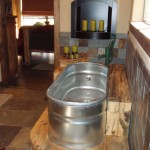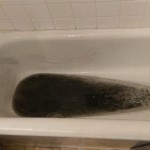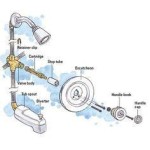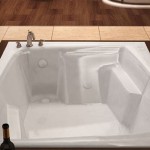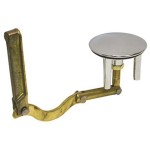Bathtub Drain Gasket Leaking: Causes, Diagnosis, and Repair
A leaking bathtub drain gasket is a common plumbing problem that can lead to water damage, mold growth, and an unpleasant bathroom environment. The drain gasket, a rubber ring that seals the drain to the tub, deteriorates over time due to exposure to water, heat, and chemicals. Understanding the causes and symptoms of a leaking bathtub drain gasket is crucial for identifying and resolving the issue promptly.
Common Causes of a Leaking Bathtub Drain Gasket
Several factors can contribute to a leaking bathtub drain gasket, including:
- Age and Wear: As the gasket ages, it becomes brittle and loses its elasticity, making it less effective at sealing the drain.
- Chemical Exposure: Harsh chemicals used for cleaning can degrade the gasket material, weakening its seal.
- Improper Installation: An incorrectly installed gasket can create gaps or misalignments that lead to leaks.
- Excessive Force: Tightening the drain assembly too tightly can damage the gasket and cause it to leak.
- Foreign Objects: Hair, debris, and other foreign objects can obstruct the drain and put pressure on the gasket, leading to leaks.
Recognizing the Signs of a Leaking Bathtub Drain Gasket
Identifying the signs of a leaking bathtub drain gasket is essential for early intervention. Here are some telltale signs:
- Water dripping or leaking from the drain: This is the most obvious indication of a leaking gasket. The water may be slow or fast-flowing, depending on the severity of the leak.
- Water pooling around the drain: If the gasket is leaking, water will pool around the drain after each use. This can create a damp spot on the bathroom floor.
- Mold or mildew growth: The dampness from a leaking gasket can encourage mold and mildew growth around the drain and tub.
- Musty odor: Mold and mildew can produce a musty odor in the bathroom.
Repairing a Leaking Bathtub Drain Gasket
Replacing a leaking bathtub drain gasket is a relatively straightforward repair that can be done by a homeowner with basic plumbing skills. Here's how to do it:
- Turn off the water supply: Located at the shut-off valve beneath the sink, turn off the water supply to the bathtub.
- Drain the bathtub: If there is any remaining water in the tub, drain it using a bucket or a wet/dry vacuum.
- Remove the drain assembly: Depending on the type of drain assembly, you may need to use a wrench or screwdriver to loosen the drain cover and remove the assembly.
- Remove the old gasket: Carefully pry the old gasket off the drain assembly, taking care not to damage the surrounding components.
- Clean the drain assembly: Use a cleaning cloth or brush to remove any dirt, debris, or old gasket material from the drain assembly.
- Install the new gasket: Position the new gasket on the drain assembly, ensuring it is properly aligned.
- Reassemble the drain assembly: Carefully reassemble the drain assembly, tightening the components snugly but avoiding over-tightening.
- Turn the water supply back on: Turn the water supply back on and check for leaks.
If you are uncomfortable performing this repair yourself, it is best to consult a professional plumber. They have the experience and tools to safely and effectively address the issue.
In addition to replacing the gasket, you can also consider using a silicone sealant to further reinforce the seal around the drain. This can help prevent future leaks and extend the lifespan of the gasket.

Plumbing Bathtub Drain Leakage Recurring Failures Home Improvement Stack Exchange

How To Replace Bathtub Drain Shoe Gasket

Bathtub Drain Leak Repair Leaking How To Fix

Bathtub Drain Leak Concrete Home Improvement Stack Exchange

6 Steps To Eliminate Bathtub Drain Leaking

How To Replace Bathtub Overflow Drain Gasket

How To Fix A Leaking Bathtub Overflow Drain Diy Guide

5 Reasons Your Bathtub Is Leaking And How To Fix It Fast

I Found The Leak How To Repair A Bathtub Overflow Drain

How To Replace Bathtub Drain Stopper With A Lift And Turn Diy



